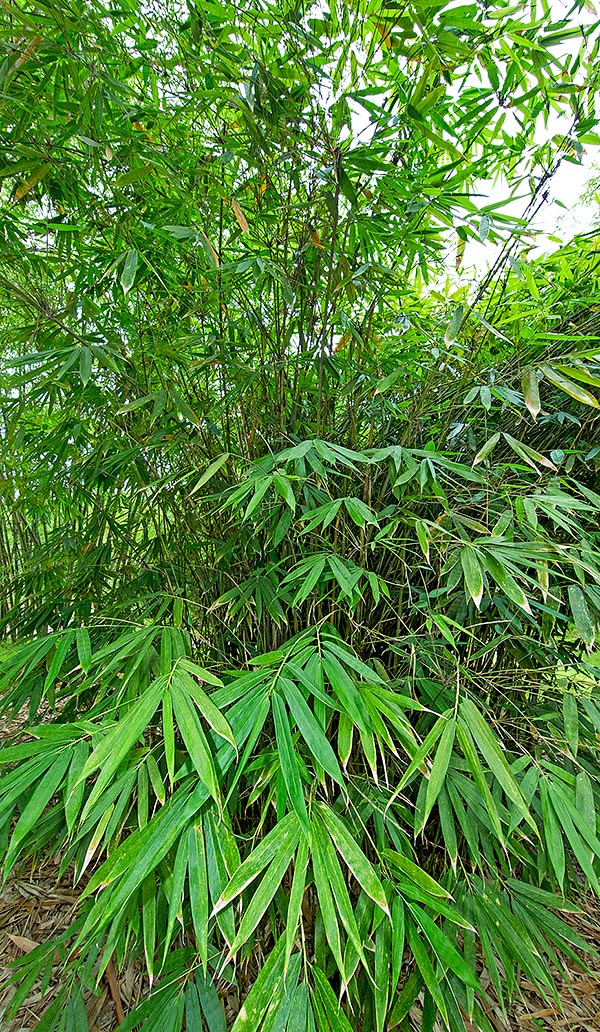Family : Poaceae

Text © Pietro Puccio

English translation by Mario Beltramini

In the humid South-East Asian forests, the Schizostachyum jaculans reaches the 10 m of height with very long and thin culms used by natives for making blowguns, as is stated by the Latin name of the species © Giuseppe Mazza
The name of the genus is the combination of the Greek verb “σχιζω” (schizo) = to crack, to split and of the substantive “στάχυς” (stachys) = spike, with reference to the spacing of the spikelets; the specific name is the present participle of the Latin verb “jaculor” = to throw darts, with reference to the use of the culms as blowgun by the Peninsular Malaysia natives.
Common names: blow-pipe bamboo (Engllish); ling nan si lao zhu (Chinese); buloh kasap, buloh sumpitan, buloh temiang (Malay); phai miang fai (Thai).
The Schizostachyum jaculans Holttum (1954) is an evergreen rhizomatous species with close cylindrical stems (culms), erect with curved apex, 5-10 m long and of 1,5-3 cm of diameter, of green colour with a whitish waxy ring under the nodes. The culms, hollow between the nodes with 1,5-2 mm thick walls and 50-130 cm long internodes, are initially covered by deciduous sheaths provided of reddish brown bristly hairs, up to 30 cm long, with almost linear lamina with long pointed apex, 10-25 cm long and 0,5-1,6 cm broad, initially erect then retroflexed. Ramifications at the nodes, starting from the middle of the culm, 40-50 cm long, with 5-9 alternate leaves, lanceolate to oblong-lanceolate with pointed apex, 5-35 cm long and 2-7 cm broad, of intense green colour and glossy above, covered by a thin down below.
Inflorescences, rarely produced, 9-15 cm long, with sessile spikelets grouped at the nodes each one carrying only one fertile flower with 6 stamina and one style with 3 purple stigmata. The fruit is a fusiform caryopsis (indehiscent dried fruit typical to the Poaceae).
It reproduces by seed, but more frequently by division of tufts.
Species forming compact tufts with luxuriant foliage, frequently cultivated in Malaysia for ornamental puposes as well as for the control of the erosion of the soils; the thin culms are furthermore utilized for realizing mats and other handicrafts. Cultivable in the tropical and humid subtropical climate regions and marginally in the warm temperate ones, where temperatures just under the 0 °C are short lasting exceptions. It requires full sun or partial shade and draining soils rich of organic substance, slightly acidic to slightly alkaline, maintained constantly humid, prolonged drought periods cause the fall of the leaves. It is good also for being cultivated in a container for the decoration of open spaces or ample particularly luminous inner spaces, taking care to maintain constantly humid the substratum and to fertilize it monthly, from spring to autumn, with specific products for green plants in pot. It is one of the bamboos with the longest internodes, its culms were used in the past by the natives of Malaysia for making long blowguns, usually were utilized two portions of culm carefully united and inserted in culms having a bigger diameter in order to increase its rigidity and maintain them perfectly straight.
→ To appreciate the biodiversity within the POACEAE family please click here.
